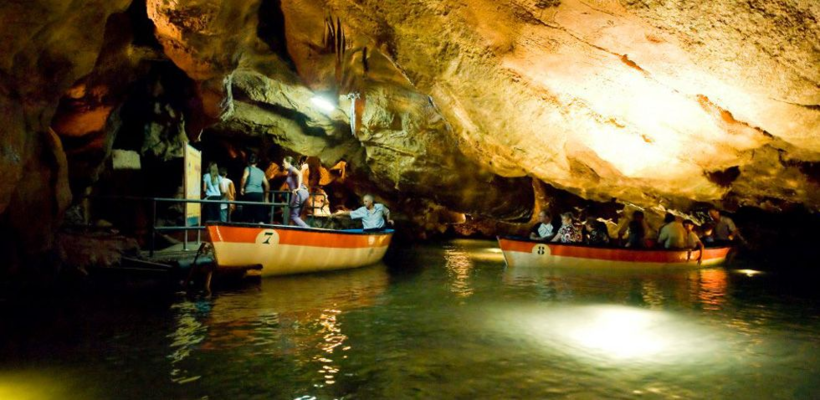WHO IS COBI ? By Anabel Marin
Cobi was the official mascot of the 1992 Summer Olympics in Barcelona.
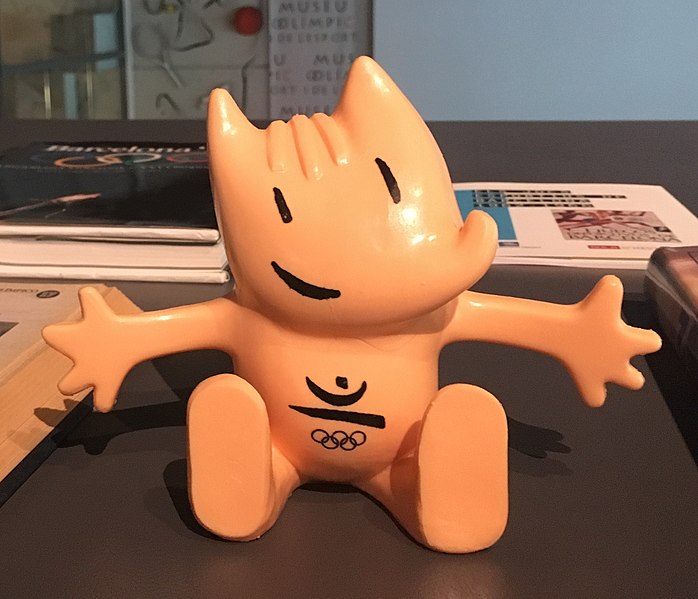
COBI
He is a Catalan Sheepdog in Cubist style inspired by the interpretations of Picasso of a masterpiece painting from Velazquez, “Las Meninas”. Cobi was designed by Javier Mariscal. The mascot was unveiled to the public in 1987. His name was derived from the Barcelona Olympic Organising Committee (COOB, Comité Organizador Olímpico de Barcelona).
Because of Cobi’s fame they created cartoons of the mascots which were called
( The Cobi Troupe ). Cobi shares his prominence with Petra ,who was a beauty girl without arms, and at the same time she became the official mascot of the 1992 Paralympic games.

Petra
Important Spanish Monuments By Melany Aristizabal, Andrea Blasco and Isis Marin
ALHAMBRA

This is an andalusian palatinal city situated in Granada. It was a palace where the monarch lived. The Alhambra is decorated with Islamic art.
Its name means ”reddish brown”.
It has a square shape because it represents the four seasons.
SEGOVIA AQUEDUCT

The aqueduct of Segovia is a Roman aqueduct in Segovia . The aqueduct once transported water from the Frio river, situated in mountains of the city in the” La Acebeda”.
The first section of the aqueduct has 36 semi-circular arches.
The line of the arches is organized in two levels decorated simply.
BURGOS CATHEDRAL
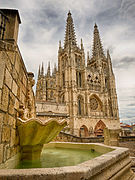
The Cathedral of Saint Mary of Burgos is a Catholic church dedicated to the Virgin Mary located in the Spanish city of Burgos. Its official name is Santa Iglesia Catedral Basílica Metropolitana de Santa María de Burgos. Its construction began in 1221
SAGRADA FAMILIA CHURCH

The Basílica i Temple Expiatori de la Sagrada Família is a large unfinished Roman Catholic church in Barcelona, designed by Catalan architect Antoni Gaudí.On June 7, 1926, during his daily walk to confession, Gaudí was hit by a tram along the Gran Via de les Corts Catalanes. Because of the 73 years appearance
BATLLÓ HOUSE

Is a building in the center of Barcelona. It was designed by Antoni Gaudí .It is an iconic house of modernism in Spain and one of the most important tourist attractions in Barcelona together with the Sagrada familia.
MÉRIDA ROMAN THEATRE
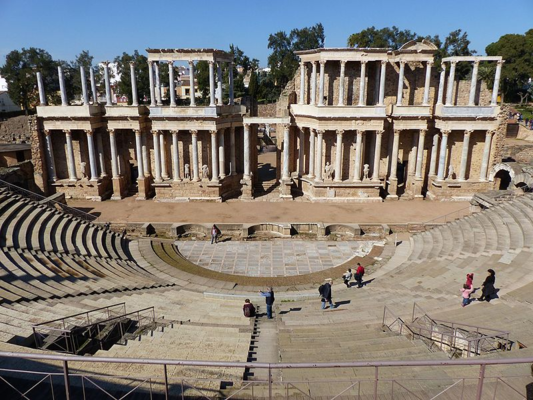
The theater has undergone several renovations
The theatre is located in the archaeological ensemble of Mérida,
It was declared a World Heritage Site by UNESCO in 1993.It was declared a World Heritage Site by UNESCO in 1993.
Castellón monuments
By Carlos Hernandez and Pablo Soler
Cave paintings : 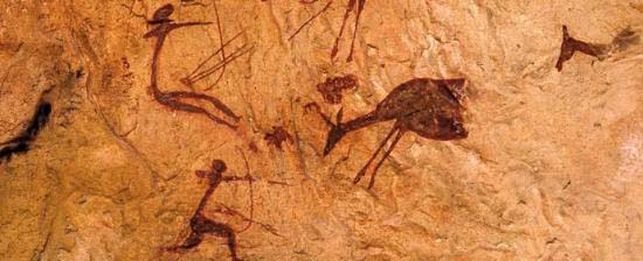
In contrast to the Paleolithic, Levantine art uses its artistic ensembles in rock shelters or in outdoor natural hollows formed in the limestone hills.They used red, black and white, which were obtained from different minerals. Another new feature is that the human figures and animals are the protagonists of the works. The cave paintings of the North of Spain and France are much larger and use more than one color unlike the Levante paintings which are smaller, less robust and they used less colors. In total there are more than 500 caves in Castellon .They are Unesco's world heritage .
Dry stone walling :

The dry stone walling of Villafranca has been and is a constant in Vilafranca and in all Castellon.Hundreds of kilometres of dry stone walls were created and hundreds of booths, ponds, wells, terraces, artigas, roads, etc.The dry stone walling is nominated as patrimony of the humanity of the UNESCO .
Templars Castles :
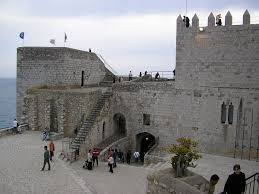
The Knights Templar left their mark in many of the municipalities in the province of Castellón and "Castellón Templar Territory" takes us through the magnificent landscapes, the history and fortunes of this Order of Knights that has always shrouded in mystery and legend.
In the province of Castellón, the legacy of the Templars finds its finest example in the magnificent Peñiscola Castle which conserves its Templar architecture and was later the papal residence of Benedict XIII, Pope Luna.
Villages of castellón
by Ainhoa and Blanca
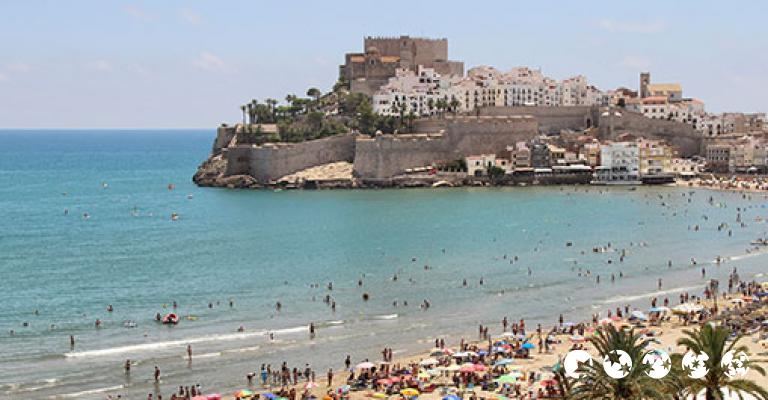
Peñiscola:
Peñíscola is one of the most popular tourist resorts in the province of Castellón. The castle, perched on a large ridge overlooking the sea, offers a glimpse of its past at a time when knights and battlemented fortresses occupied the lands of El Maestrazgo. Pope Benedict XIII, known as 'Papa Luna', chose this as a place of seclusion and to launch the fight for the unity of the Catholic Church.

Morella:
Morella is a medieval town, located in the north of Castellón. In January 2013, Morella became part of the network of the most beautiful towns in Spain
-
The medieval castle and walls: the castle was declared as a historic-artistic monument in 1931. Its walls are 2,5 kilometer long and have very symbolic doors.
-
Camino del Cid: in this place you will find the “Anillo de Morella”, which belongs to the touristic route of the historical character Cid Campeador, who was a cavalier in the eleventh century.

Benicassim:
Benicassim is internationally known for its Music Festivals (FIB and Rototom) with thousands and thousands of young people who come from all over Europe. Many people from Castellon own apartments or houses here to spend the summer at the beach.
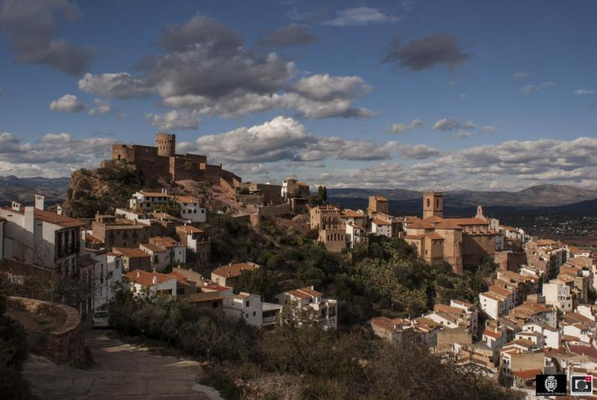
Villafamés:
Villafamés is halfway between the coastal zone of the Orange Blossom Coast (Costa Azahar), and the mountainous hinterland. Its rich heritage can be felt as you wander through the streets, where you can feel the influence of history, culture, gastronomy and the environment. The village is popular for a huge pending stone in the middle of a street.
Spain's Traditional celebrations
By Inés Gozalbo & Maria Carbó

• Easter week (Andalucia)
Easter Week lasts for seven days, the Holy Week processions in Andalucia are experienced in a very particular and intense way. In these days people are sad, because this celebrates the death of Jesús.
- Carnival (Cadiz, Tenerife)

In some places of Spain, we celebrate Carnival. Here in Castellón, are popular the Carnival of Vinarós, a little village near Castellón. In Spain the most typical ones are the Carnival of Santa Cruz de Tenerife which is held each February in Santa Cruz de Tenerife, the capital of the largest of the Canary Islands, and it attracts people from all over the world. In these days people dress up and sing and dance a lot.
• Sanfermines (Pamplona)
The festival of San Fermín is a week-long. It’s a historically rooted celebration held annually in the city of Pamplona, Navarra , Spain.
The celebrations start at noon on the sixth of July, with a pyrotechnic chupinazo. The rocket is launched at 12:00 noon on July 6 from a city hall balcony with a lot of people celebrating the act in the city hall square and other locations in Pamplona..
Over 1,000,000 people come to participate in this festival.

• The Three Wise Men
On the 5th January there are processions all over Spain Sweets are thrown to children from the floats to all the people who come out to watch. For Spanish children the 6th of January is the most important day of the year when they wake up to find that the Three Wise Men have left gifts for them in their
house.

• Moors & Christians
Moors and Christians, is a set of festival activities which are celebrated in many towns and cities in the southern Valencian Community. According to popular tradition the festivals commemorate the battles, combats and fights between Moors and Christians during the period known as Reconquista.

• Flamenco in Seville's April Fair:
The Seville Fair traditionally starts two clear weeks after easter week, in a huge area in Los Remedios, to the south-west of the city, next to the river. This is a week of serious dancing, drinking, eating and socialising, with late nights.

TYPICAL TRADITIONS AND FESTIVITIES IN VALENCIAN COMMUNITY
By Nayara Hervás & Julia Mateu
SEXENNI MORELLA
This is a festivity celebrated in Morella to honor Vallivana's Virgin and It is celebrated every six years. During sexenni years citizens cooperate curling coloured paper. This paper is used to do sculptures and pictures that decorate streets during festivities. In August, when the most important events are celebrated, there is a pilgrimage to Vallivana's hermitage.The previous year is also celebrated the “Anunci” with parades.



FALLAS VALENCIA
This is a festivity which is celebrated in Valencia in honor of “San José”. It is said its origin is when carpenters threw old things away and burnt them later in a big fire.
Nowadays, these fires have evolved to amazing huge sculptures made with a satirical language on boards which are used to criticize politicians and celebrities. Just one of these “ninots” or sculptures is saved from fire because during the night of 19th March (St. Joseph's Festivity) all Fallas are burnt in an event called “la cremà”.

MAGDALENA
The week of Magdalena is the biggest festivity in Castellón de la Plana. They last for a week. For Magdalena festivity nineteen gaiatas are built, each for a neighborhood of Castellón. They are like monuments with a lot of lights in many colours. Each neighborhood designs its Gaiata. In each “gaiata” there is a “queen” and a lady of honor. When the festivities of Magdalena are over, they choose the winning Gaiata. The most important event is the traditional “romeria” or walking trip to a hermitage on the top of a hill. People wear a black shirt or “Castellonera” dresses. They also use a cane with a green ribbon to go up the hill. During the week, they do a “mascletá” at noon everyday. A mascletá is a firework that takes place during the day and, at night, there are fireworks or music concerts.
GAIATA

ROMERIA

MAGDALENA SHIRT CASTELLONERA DRESS

CANES AND RIBBONS FIREWORKS


LES USERES PILGRIMS
Last Friday of April the people of Useres, in l'Alcalatén's Region, recalls a former tradition of the Middle Ages. There are thirteen men, the guide and twelve pilgrims (in representation of Jesus Christ and twelve Apostles), accompanied by three singers, the priest, the representative of the Town hall and other people who walk towards the sanctuary of Peñagolosa's San Juan which is 25 kilometers away.The Pilgrims are voluntary people that take turns for walking in the different streets in which the town is divided. The “calvarios” and women make bread of San Juan in the different bakeries of the town. The cooks and the depository prepare the food, the vestas, candles, utensils and everything necessary for the two days. On Friday, at dawn, begins ritual with the Mass of the Càrregues, then that of the Pilgrims, after the procession of departure where they go barefoot.
LES USERES VILLAGE

PILGRIMS

Gastronomy of Spain By Yasmin Omari & Redouane Khadir
Gastronomy in Spain is appetizing, healthy and delicious.
The gastronomy of Spain is as rich and varied as the country itself, with lots of first class ingredients to choose from, an excellence in cooking, wise old traditions have led Spain to be at the top of culinary excellence in Europe.
To define Spain in terms of food items is pretty easy: take some olives, extra virgin olive oil, fresh vegetables, sherry, wine, garlic, chicken, fresh fish, etc.
Eating Out in Spain
A great way to explore the real Spain when eating out is visiting smaller bars and hidden restaurants where the locals frequent. You are more likely to encounter authentic local dishes and lower prices whilst soaking up the unique atmosphere.
A good option to discover the gastronomy of Spain and eating out during the day is the so called ‘’menu del dia’’ – menu of the day.
Rice Dishes and the Famous Paella

Paella is the most important and best known dish throughout the world. It is a rice dish cooked in many different variations depending on the region. But rela Paella is cooked with chicken or rabbit, green beans and peas .But in Castellon it is made also with snails.
PAELLA VALENCIANA by Maria Gozalbo
At the Valencian Community, on Sundays it is typical to eat paella with your family.
Last sunday I went to my grandparents' country house where my dad cooked paella for all the family, and it was very nice.
INGREDIENTS OF PAELLA:
-400 grams of Rice
-1 kg of chopped chicken
-500 grams of chopped rabbit
-200 grams of green beans
-100 grams of fresh white beans
-100 grams of chopped tomato
-1 garlic clove
-6 tablespoons of olive oil
-Some strands of saffron
-Red paprika ground
-A sprig of rosemary
-Salt
Fish with Seafood
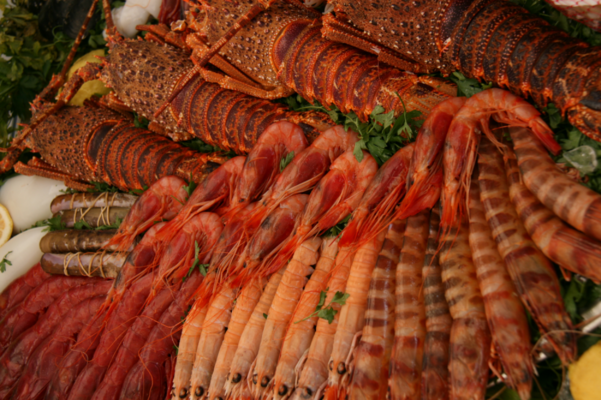
Spain is a Mecca for fish and seafood lovers. The choice is remarkable and what you would expect from a country surrounded by the Mediterranean and Atlantic seas? Lobsters, langoustines, crabs, barnacles, shrimps, octopus, oysters, mussels and clams are amongst the favourites on offer all over Spain.
Meat
There is always a good selection of fresh meats on sale at the larger supermarkets and indoor markets to be found in most towns and villages throughout Spain.
Beef is eaten quite a lot in Spain.
Chorizo and Jamón
Cold meats are typical in Spain. Ham (or Jamón) tops the list and is a prize delicacy in Spain, "Jamon Serrano" or ‘’Jamon Iberico”, is delicious to eat at any time of the day and you get used to the unique taste very soon. Ideally, good quality Spanish ham should be a bit sweet rather than salty.
Gazpacho Soup

Gazpacho is a cold soup made of raw, blended vegetables. They say that any tour of Spain, especially a culinary one, should include a visit to the sunny and charming Andalucia! The emblematic tapas tradition originated in Andalucia, eaten with a glass of your favourite beer, there is the gazpacho recipe:
Ingredients
. 2 lbs vine ripe tomatoes
-
2 cloves of garlic
-
6 inch cucumber peeled and chopped
-
1 green bell pepper chopped
-
1/2 cup chopped white onion
-
1/4 cup red wine vinegar
-
1 tbsp vinegar
-
3/4 cup olive oil
-
1/2 tsp cumin
-
1/2 tsp cayenne pepper optional
-
Salt to taste
-
Chunk of french bread about 3-4 inches, cut into pieces
Instructions
-
Prepare your vegetables by ensuring they are chopped into small pieces (the garlic can be minced) Add the to the blender.
-
Begin to pulse. Slowly add oil and vinegars. Keep blending until smooth.
-
Add cumin, salt, and cayenne pepper (if using).
-
Finally, mix in small bread pieces.
-
Keep blending until the soup no longer has chunks and is pretty smooth. It will look a little creamy like the in the picture above.
-
Pour into a large bowl and refrigerate for at least 1 hour, up to 24 hours. The flavor gets better with time.
Recipe Notes
The soup will keep for about 5 days in the fridge, but is best within the first 48 hours.
Relevant writers, philosophers, painters.
By Blanca Ramirez & Wilson Jin
Relevant writers:
Miguel de Cervantes: Was a Spanish writer who is widely regarded as the greatest writer in the Spanish language and one of the world's pre-eminent novelists. His novel Don Quixote has been translated into over 140 languages and dialects; it is, after the Bible, the most-translated book in the world.

Federico Garcia Lorca: Federico Garcia Lorca was a Spanish poet, playwright, and theatre director.Federico García Lorca achieved international recognition as an emblematic member of the Generation of '27, Romancero gitano was the first great poetic success of Lorca, Published in 1928, and it is composed of 18 romances.
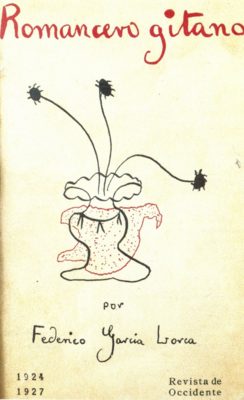
Relevant philosophers:
Ortega i Gasset: The Revolt of The Masses is Ortega's best known work.His philosophy has been characterized as a "philosophy of life".

Miguel de Unamuno:
His major philosophical essay was The Tragic Sense of Life. Unamuno's philosophy was a negation of all systems and an affirmation of faith "in itself."
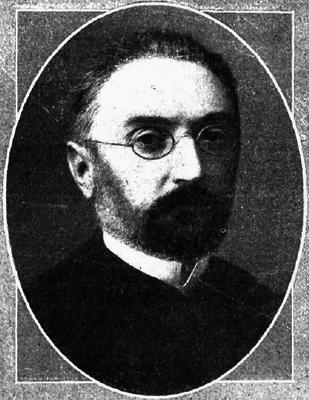
Relevant painters:
Picasso: Was a Spanish painter, sculptor, printmaker, ceramicist, stage-designer, poet and playwright who spent most of his adult life in France. He is known for co-founding the Cubist movement, the invention of constructed sculpture, the co-invention of collage, and for the wide variety of styles that he helped develop and explore.
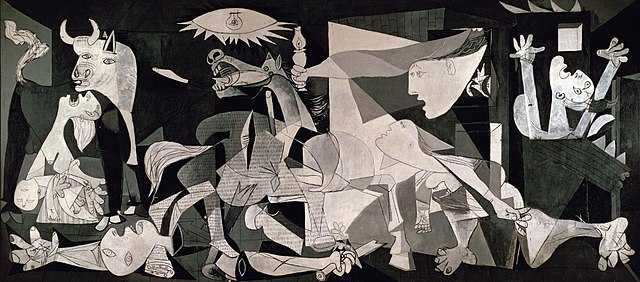
Goya:Was a Spanish romantic painter and printmaker. He is considered the most important Spanish artist of the late 18th and early 19th centuries Goya is often referred to as both the last of the Old masters and the first of the moderns. He was also one of the great contemporary portraitists.

Velazquez:Was a Spanish painter, the leading artist in the court of King Philip IV and one of the most important painters of the Spanish Golden Age. He was an individualistic artist of the contemporary Baroque period. Famous modern artists, including Pablo Picasso, Salvador Dalí and Francis Bacon have paid tribute to Velázquez by recreating several of his most famous works.
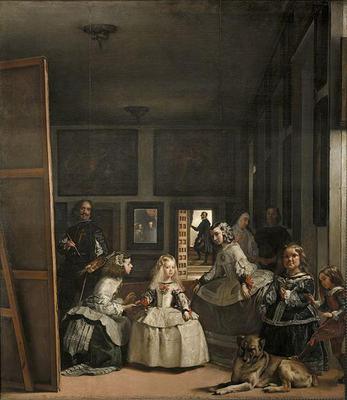
Spanish rivers,mountains and islands by Alex Guinot
Rivers:
Guadalquivir river : It is situated in the south of Spain,in the Andalucia region.It is 657Km long.I think it is the most beautiful river in Spain.
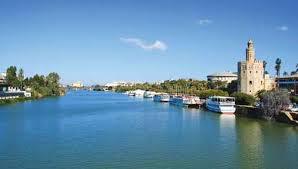
Ebro river : It is situated in the north of Spain.It is 930Km long.
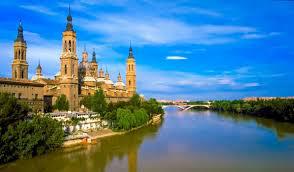
Tajo river : It is situated in the middle of Spain and Portugal.It is1007Km long.
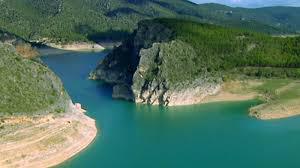
Duero river : It is situated in the middle of Spain and is the limit of Spain and Portugal.It is 897Km long.
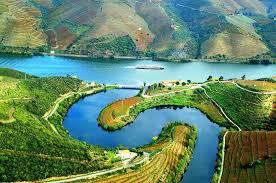
Mountains:
Sierra Nevada : It is in the south of Spain.It is 90Km long.
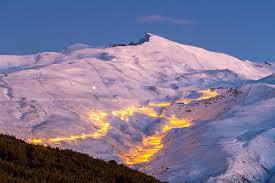
Mulhacen:It is situated at the Cordillera Penibética is the highest mountain in continental Spain and in the Iberian Peninsula.
Teide: It is situated in Canary Islands and is the highest mountain in Spain. It is an inactive volcano.

Islands of Spain:
The Canary Islands is a Spanish archipelago and the southernmost autonomous community of Spain located in the Atlantic Ocean.
The seven main islands are: Tenerife, Fuerteventura,Gran Canaria, Lanzarote,La Palma, La Gomera and El Hierro.
The archipelago includes much smaller islands and islets: La Graciosa,Alegranza, Isla de Lobos, Montaña Clara, Roque del Oeste and Roque del Este.
The Balearic Islands are an archipelago of Spain in the western Mediterranean Sea, near the eastern coast of the Iberian Peninsula.
The four largest islands are Mallorca, Menorca, Ibiza, and Formentera.
Many minor islands and islets are close to the larger islands, including Cabrera, Dragonera, and S'Espalmador.
The islands have a Mediterranean climate, and the four major islands are all popular tourist destinations.
CASTELLÓN GEOGRAPHY
by Anabel Marin & Maria Gozalbo
COLUMBRETES ISLANDS
The Columbretes Islands are a group of small uninhabited islets of volcanic origin, in the Mediterranean Sea. Today they belong to Castellón municipality, Valencian Community. Columbretes islands are 65 km away from Castellon.
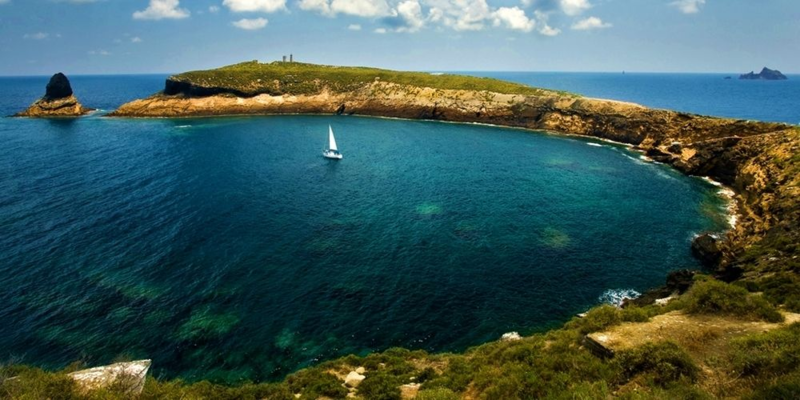
PEÑAGOLOSA
Penyagolosa is our highest mountain with 1813 m. The most emblematic of the Valencian Community. It is known as "The Stone Giant" because, from a distance, it looks like a giant lying down.

SAN JOSÉ CAVES
This cavity is visited on a quiet boat trip, sailing the underground river, more than three kilometers long.
It is the longest underground river in Europe!
